Boston, MA Pollen and Allergy Report for Summer 2023
Pollen Allergy Trends in Boston, MA
When is pollen lowest in Boston, MA?

February
Lowest month total PPM
Avg. PPM
When is pollen highest in Boston, MA?

April
Highest month total PPM
Avg. PPM
How does pollen in Boston, MA compare to Massachusetts?
Boston has a higher average PPM than the state of Massachusetts.
Boston yearly avg PPM:
Massachusetts yearly avg PPM:
How does pollen in Boston, MA compare to the USA?
Boston has a higher average PPM than the USA.
Boston yearly avg PPM:
USA yearly avg PPM:
Is pollen worse this year in Boston, MA?
Spring 2023 was worse than spring 2022.
Spring 2023 PPM:
Spring 2022 PPM:
Average PPM in Boston, MA
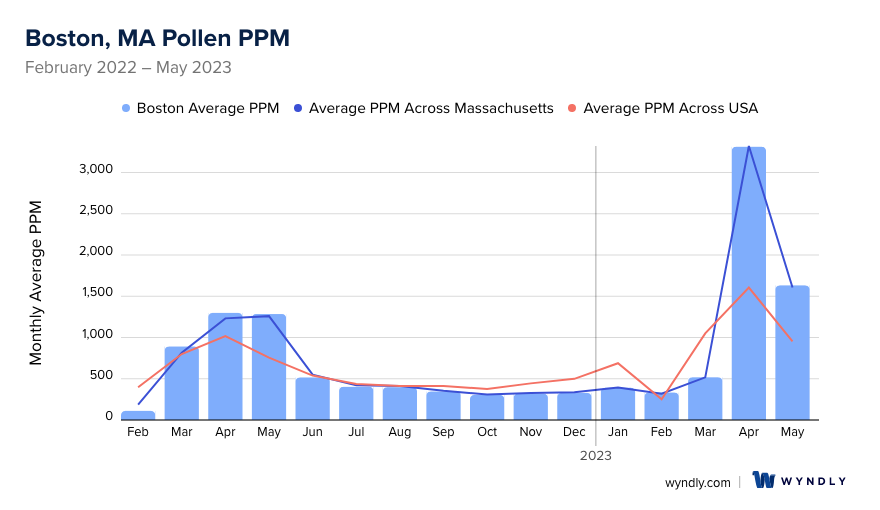
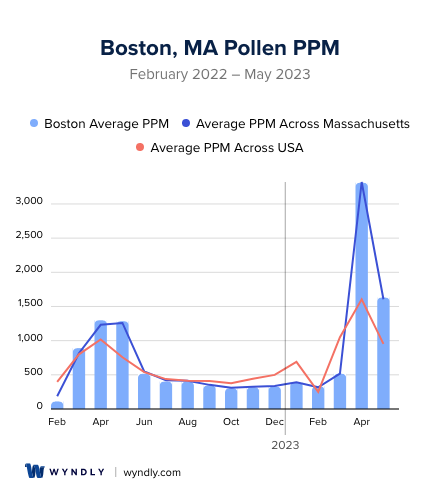
Boston, MA Pollen and Allergy Breakdown by Month
Grass
When is grass pollen highest in Boston, MA?
April has the highest grass pollen in Boston, MA with an average PPM of
When is grass pollen lowest in Boston, MA?
December has the lowest grass pollen in Boston, MA with an average PPM of
Tree
When is tree pollen highest in Boston, MA?
April has the highest tree pollen in Boston, MA with an average PPM of
When is tree pollen lowest in Boston, MA?
October has the lowest tree pollen in Boston, MA with an average PPM of
Weed
When is weed pollen highest in Boston, MA?
April has the highest weed pollen in Boston, MA with an average PPM of
When is weed pollen lowest in Boston, MA?
February has the lowest weed pollen in Boston, MA with an average PPM of
Boston, MA Pollen Monthly Breakdown by Pollen Type
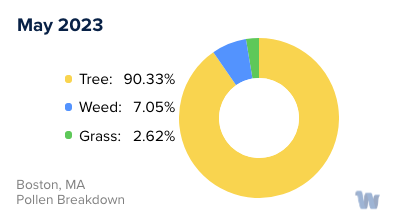
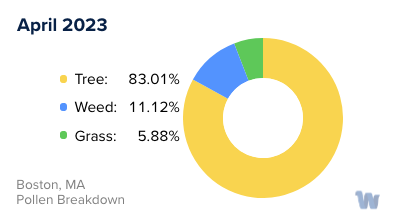
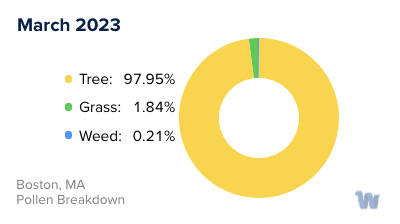
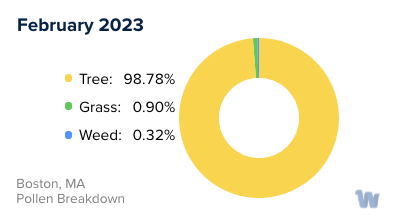
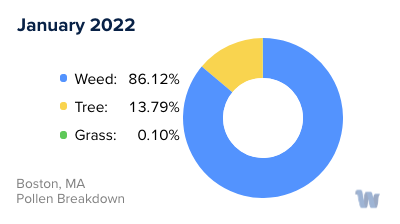
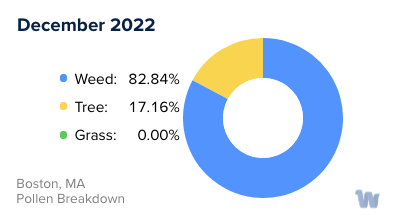
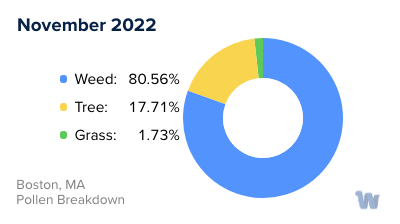
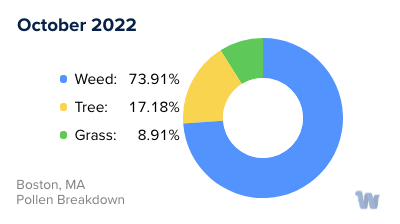
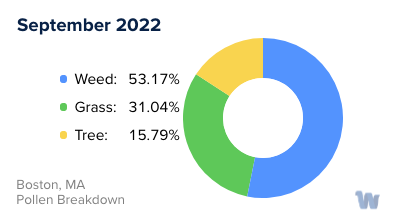
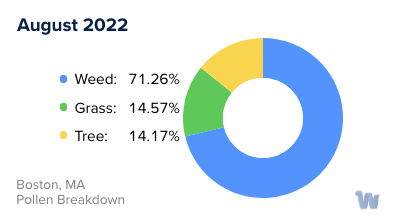
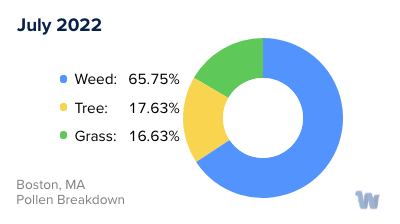
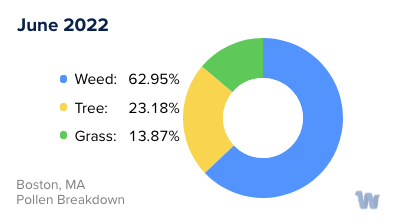
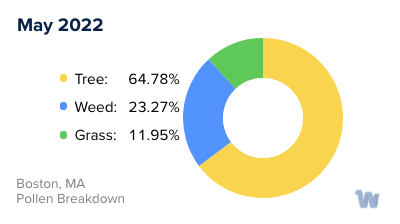
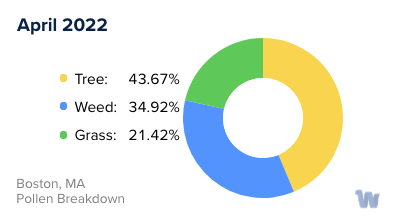
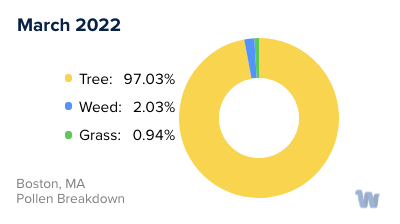
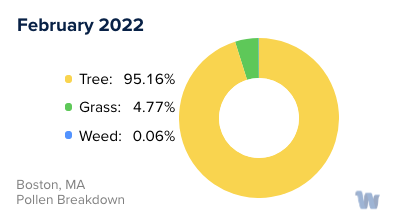
Pollen and Hay Fever in Boston, MA
Boston, Massachusetts, with its vibrant and diverse natural landscape, experiences a significant presence of pollen allergens that can trigger hay fever symptoms in susceptible individuals. Hay fever, also known as allergic rhinitis, is a common condition characterized by sneezing, nasal congestion, itchy and watery eyes, and an overall feeling of discomfort. Understanding the types of pollen and the seasons during which they are prevalent can help residents of Boston better manage their allergies.
In Boston, various types of pollen can trigger allergic reactions. During the springtime, tree pollen tends to be a major culprit. Common trees that release large amounts of pollen in the area include oak, maple, birch, pine, and cedar. These trees start pollinating in late winter or early spring, with their pollen lingering in the air until late spring or early summer. Grass pollen, on the other hand, becomes more abundant during the summer months, especially from May to July. In Boston, common grasses that produce significant amounts of pollen include Bermuda grass, Timothy grass, and Kentucky bluegrass. Additionally, weed pollen, such as ragweed, is prevalent during the late summer and fall seasons, typically peaking in August and September.
The timing and severity of pollen allergies in Boston can vary from year to year due to weather patterns and other environmental factors. However, it is generally observed that spring is the peak season for tree pollen allergies, summer for grass pollen, and late summer to fall for weed pollen. These seasonal variations contribute to the cyclical nature of hay fever symptoms in the area, with different allergens dominating different times of the year.
For Boston residents prone to pollen allergies and hay fever, staying informed about the types of pollen present and their corresponding seasons can be beneficial. It allows individuals to anticipate and prepare for potential allergy triggers, minimizing exposure and managing symptoms effectively. Consulting with a healthcare professional can provide further guidance and personalized advice on how to navigate pollen allergies in Boston, ensuring a more comfortable and enjoyable experience throughout the year.

